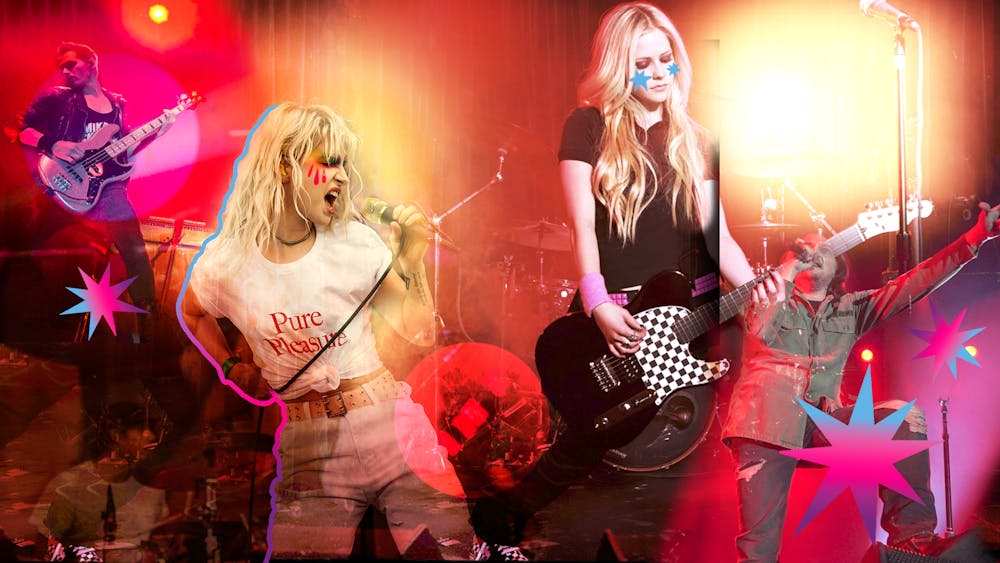On Jan. 18, rock fans got hit with a shocking announcement. A flurry of the genre’s biggest 2000s artists will collide in Las Vegas for the When We Were Young Festival on Oct. 22. The lineup, headlined by Paramore and the highly anticipated reunion of My Chemical Romance, reads like a roster that an emo fan would have dreamed up for the Vans Warped Tour in 2009. After the initial date exploded on social media and quickly sold out, the festival announced two more dates, both of which retain a majority of the same lineup. In theory, the festival could become a fantastic exercise in nostalgia and drive the ongoing pop–punk revival even further. Despite how promising that sounds, in reality When We Were Young is quickly accumulating controversy after controversy, seeding the supposed dream festival with doubt and suspicion. If those suspicions come true in October, it might be a big blow to music festivals in a post–pandemic era.
As soon as the news of When We Were Young dropped, people on social media immediately started to raise concerns about the festival. A single–day lineup armed to the teeth with genre titans and popular up–and–comers, along with high prices, led some to believe that the upcoming festival was a scam. With the festival’s allotted time of 13 hours a day and 65 artists spread across multiple stages, set clashes also became a concern. Some even went so far as to make comparisons to Fyre Festival, the notorious and extremely botched pipe dream of a getaway event in 2017. If people are going to pay a non–refundable $250 for a single day of general admission, they need to make sure that the money won’t result in a music festival nightmare. Additionally, if people want air–conditioned restrooms or charging stations, those utilities are only for general admission plus and VIP tickets, respectively. Amenities can increase the cost to over $400 for a single day, which eclipses the price of a three–day ticket to Coachella.
Another point of attack is that the setlist which, just like a stark majority of the genre, lacks diversity. While a number of different subgenres are being tapped, very few women and people of color are taking the stage. While this could be attributed to the genre’s issues at large with diversity back in its heyday, it also doesn’t bode well that the lineup includes more contemporary acts, like Wolf Alice or Jxdn, while excluding POC artists of the same ilk like Pinkshift and Willow. If pop–punk really wants to enter a revival, When We Were Young needs to be more inclusive.
The biggest concern comes at the head of the promotion—the festival is being managed by Live Nation. Just a few months ago, the entertainment company was sued for $2 billion for putting concertgoers at risk in the wake of the tragedy at Astroworld Festival. They also got sued again this year alongside Ticketmaster for using an unfair arbitration system. Live Nation offered a short statement ensuring safety for concertgoers, but it failed to elaborate on any substantive ways in which it could do so. If they can’t offer that, it’s simply too early for them to be back to hosting large crowds, much less a single–day lineup of 65 artists.
While it doesn’t seem like the festival will be a Fyre–level disaster, thanks to the legitimacy of the artists performing and the companies hosting it, there are still way more questions than answers. The festival isn’t for another eight months, so concerns can hopefully be cleared up as the year progresses. However, as it currently stands, When We Were Young just seems like too much. Exorbitant prices, set clashes, shifty customer service experiences, a lack of diversity among artists, and a management company that terribly botched their last festival and is still embroiled in legal trouble—it all comes together in a mess that, scam or otherwise, should be avoided until clarity and safety are ensured.
Worse, if the biggest post–pandemic festival falls flat, how could it affect music festivals to come? Festivals have suffered from COVID–19 as well as their own myriad of issues, such as Bonnaroo’s cancellation over flooding and the aforementioned tragedy at Astroworld. If When We Were Young, potentially the largest festival in three years, results in anything other than a fantastic event, festivals may have an even harder time trying to reassert themselves as the ultimate music experience. While it seems like a dire future for fans of these events, When We Were Young isn’t exactly offering any reassurance.

